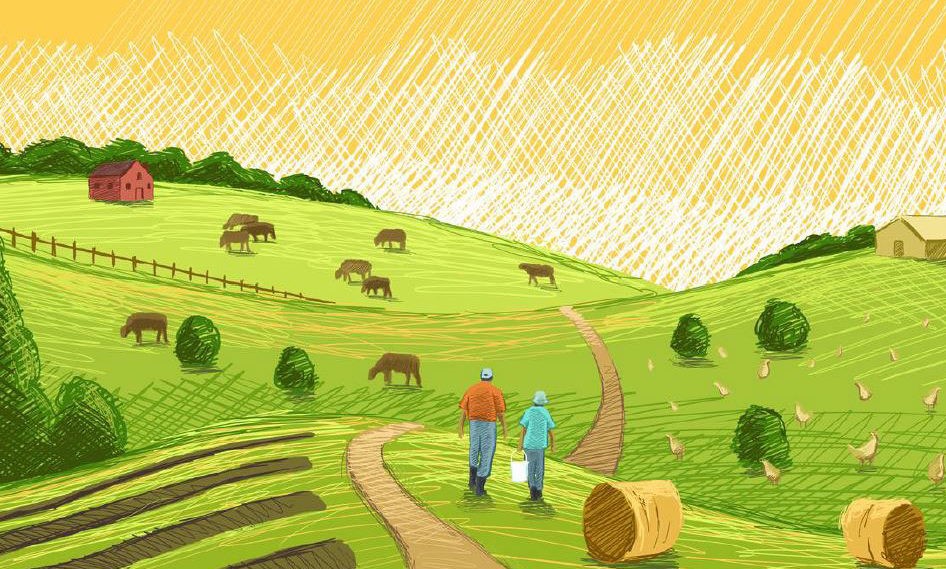This blog post reflects the data presented in the 2017 Census of Agriculture. It is intended to provide a general overview of some of the findings of that data. Please note, the Census of Agriculture often uses inconsistent methodologies making comparisons between years challenging.
“We can all use the Census to tell the tremendous story of U.S. agriculture and how it is changing. As a data-driven organization, we are eager to dig in to this wealth of information to advance our goals of supporting farmers and ranchers, facilitating rural prosperity, and strengthening stewardship of private lands efficiently, effectively, and with integrity.”
Sonny Perdue, Secretary of Agriculture
Over 31 million beef cows, 715 million pounds of tobacco, and nearly 15 billion bushels of corn all raised and harvested in the United States. Released on April 11, 2019, the 2017 Census of Agriculture depicts the current status of American farming across over 800 pages of tables, graphs, and data.
The Census, performed by the United States Department of Agriculture (USDA) formally dates back to 1840 and is updated every five years. The survey breaks data down to show state and county level farming trends in additional to the national picture. Data includes details on how land is used, such as what crops are grown and animals raised. In additional to agricultural products, the survey includes data on farm ownership, farmer demographics, production and decision-making practices, and total amounts of spending and revenue. The 2017 Census received data from 72% of farms meeting inclusion criteria –land with a potential to produce and sell at least $1,000 of agricultural products during 2017 – data from respondents is then adjusted to reflect the total number of farms. According to USDA, the 2017 Census had a lower response rate than both the 2012 and 2007 Censuses. Lower response rates may make the data from the 2017 Census less reliable than previous versions.
Contrasting an aging population and declining market share with an increase in gender diversity and some sustainable farming practices (especially cover cropping and organic production), the 2017 survey paints a mixed picture for American farming. The total number of farms has decreased from the 2012 Census, down 3.2% to just over 2 million farms on 900 million acres of land. 96% of those farms are family owned. The average farm income sits at $43,053, with only 43.6 percent of farms reporting a positive net cash farm income. Consolidation, too, presents a significant problem for American farming – 1.56 million farms made under $50,000 in 2017 while only 76,865 made $1 million or more. Farms making over $1 million account for two-thirds of the $389 billion in total production value from U.S. farms.
Even with incomplete data, farmer demographics are concerning. The average age of producers has hit a new high, reaching 57.5 years old. Farming remains a largely white occupation – 95%, or 3.2 million farmers are white, compared to only 45,508 black farmers and 112,451 Hispanic farmers. Women still account for only 36% of farm operators. However, new data in the 2017 Census suggest that women are significant decision makers on farms with women making up 48% of producers making day-to-day on-farm decisions.
As with female farmers, the number of young farmers may also be increasing, though only marginally. Over 10% of farms have an operator under the age of 35, with a total of 321,261 young farmers nationwide. Perhaps correlated, the practice of farming itself is finally embracing new technology. Three-quarters of all farms now have internet access. More strikingly, the number of farms using renewable energy producing systems more than doubled from 2012, reaching 133,176 farms in 2017.
Note: USDA has changed methodology between the 2012 and 2017 censuses regarding demographic information. Specifically, the 2017 census allows for data from four operators be included in the census whereas 2012 only counted up to three operators.
It is clear from the survey results that American farming faces significant challenges. USDA should consider policy initiatives that incentivize and improve access to farming for those demographics that are currently underrepresented. Incentives might include modeling farming in schools and higher education programs, generous loan terms for underrepresented minorities and young people who want to buy land to farm, or technical assistance programs to female operators to improve production knowledge and support. Whatever the approach, USDA must meet stated goals and respond to the 2017 Census with practices and regulation to improve the state of American farming by the upcoming 2022 survey.


